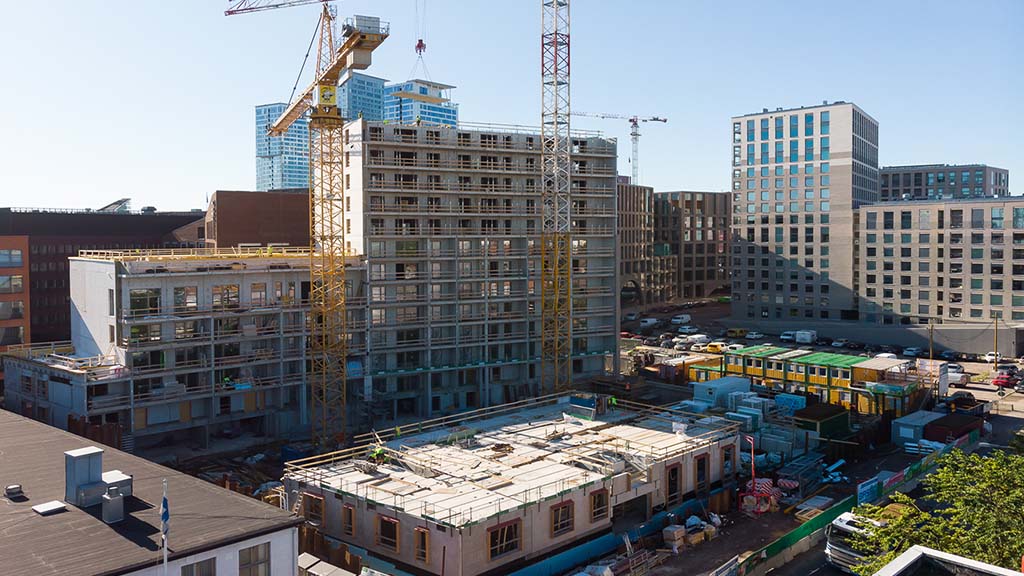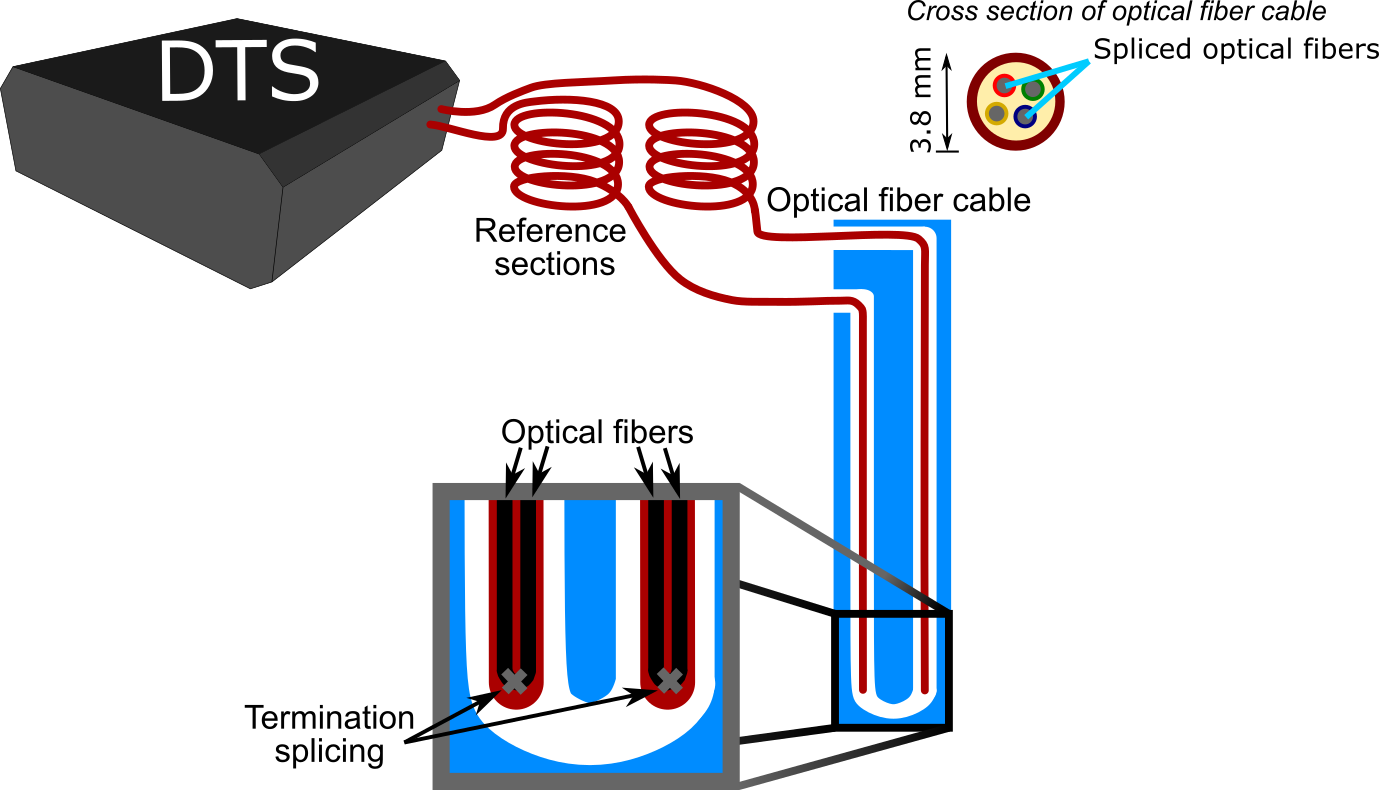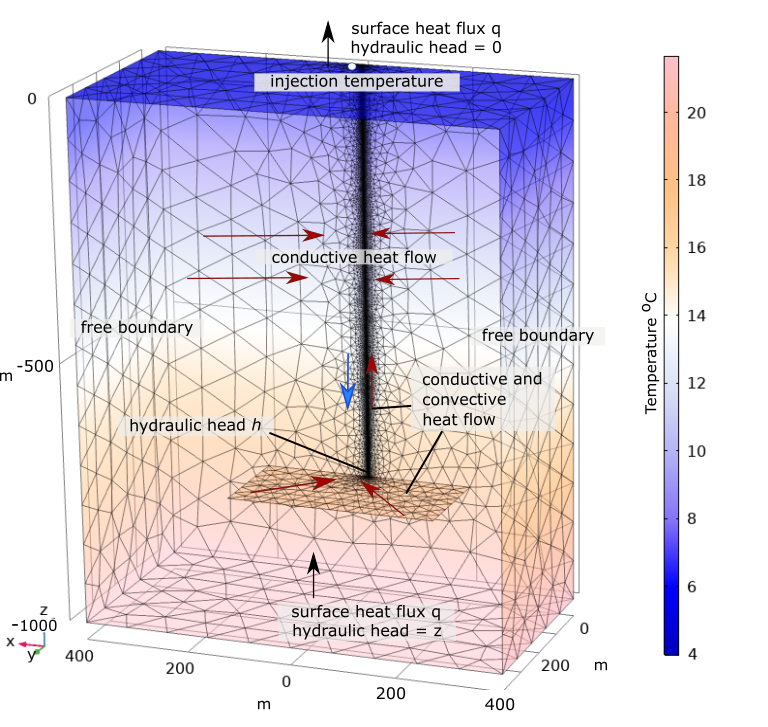Urban Geothermal Energy and Positive Energy Buildings
In Kalasatama in Helsinki, technology and service solutions are combined in an energy-efficient residential building, illustrating their effectiveness in an urban environment. The goal is to develop the concept of a Positive Energy Building, integrating geothermal energy, heat pump technology, solar power and heat, and the HVAC system. The concept aims at the lowest possible ecological footprint in energy solutions for buildings.

In the HYBGEO project, the building concept and technology are designed to be scalable and easy to choose and deploy in cold climate regions in Finland and globally. The annual energy consumption of the Positive Energy Building (PEB) is equal to or smaller than the building’s energy generation.
One of the project’s goals is to increase the use of geothermal energy at different depths and develop a geophysical research method for urban areas to identify the ground properties.
Passive Seismic Surveys in Urban Areas
Evaluating the ground properties and structure in city centre areas calls for a whole new geophysical approach. The above- and underground infrastructure, including buildings, power lines, pipelines, and cables, combined with the limited depth extent of short measurement lines on small plots, sets its own requirements for the use of surveying methods.
The passive seismic method which is based on the passive recordings of environmental and background noise was selected for this urban site. The method can be used to register the seismic waves generated by traffic, machinery, industry, and natural phenomena such as wind. A cost-effective passive seismic survey is ideal for small plots in the city centre areas.
‘Identifying the ground structure in advance is an important part of a successful geothermal energy project. Geophysical methods, including the passive seismic method, are valuable in selecting optimal drilling locations for deep geothermal wells and in predicting any challenges in drilling. Furthermore, information about the ground properties, such as bedrock fracturing, and merging this information into heat transfer modelling enable more reliable estimates of available energy,’ says Annu Martinkauppi, geophysicist in the Geoenergy team at the Geological Survey of Finland (GTK).
Hybrid Geothermal Energy Solutions as an Alternative in Densely Build Areas
Medium-deep geothermal wells have a significant production potential in both property- and block-specific and regional heat solutions. The heat collection technology of medium-deep boreholes differs from the closed-loop U-tube solution of shallow geothermal boreholes. As the depth of the energy borehole increases, heat losses are lower in a coaxial collector than in a U-tube.
However, the material properties of coaxial collectors still need to be developed to transfer the collected heat more effectively. In the project, Muovitech Oy develops the material properties of the coaxial collector designed for a deep geothermal borehole. Considering the heat transfer efficiency, the thermal conductivity of the pipe should be as low as possible to improve the insulation capacity and reduce heat losses. The thermal conductivity of different pipe materials has been measured at GTK’s laboratory.
The real estate sector has taken increased action in response to stricter energy-saving goals. For example, excess heat from properties should no longer be wasted. The HYBGEO project’s business partners are developing solutions to meet this demand. The use of geothermal energy in urban areas can be supported by concepts that combine conventional, shallow (≤ 300 m) and deep (600–2,000 m) geothermal boreholes. Basic energy needs can be covered by deep boreholes, while shallow boreholes can cover heating peaks. Shallow boreholes could also be recharged with surplus energy. Such hybrid geothermal energy solutions are one option, especially in densely built areas.
DTS Method for Monitoring Geothermal Boreholes
Fibre optics combined with distributed temperature sensing (DTS) method can measure the temperatures of geothermal boreholes with high accuracy and monitor any changes during operation. Measured temperatures provide essential information for operating the sustainable use of energy boreholes. Based on measured data, certain boreholes can, for example, be utilized more intensely, while the use of other boreholes can be reduced.
Heat transfer models can be evaluated and improved by comparing the responses of modelled and measured data and seeing how well they match with each other. Active modelling is considered when theoretical heat transfer models are updated and improved with relatively real-time measurement data.

Impact of Heat Carried by Groundwater on the Output of a Geothermal Borehole
As a result of international cooperation, the project has increased researchers’ expertise in the modelling of medium-deep geothermal boreholes. In addition to the heat transfer by conduction in a solid media, the modelling can consider the impact of convective heat transfer by flowing groundwater in a fractured media as well.
‘Fundamental results were achieved when modelling heat transfer in a fractured medium. The sensitivity analysis examined how fracture aperture, hydraulic permeability, water flow, number of fractures and their occurrence depth affect the production of a medium-deep geothermal borehole. Based on the results, the impact is directly proportional to the additional heat obtained from the geothermal borehole,’ says Martinkauppi.
A wide, high permeable fracture deep in the bedrock can produce a 10 % warmer geothermal fluid than a narrow, low permeability fracture close to the ground surface. If several fractures with high permeability are located deep in the bedrock, they will improve the geothermal energy yield even further. However, water in fractures should be in motion, not stationary.
The sensitivity analysis of the model’s calculation method highlighted an interesting finding: a sufficient number of elements, elements size and meshing parameters of how the geothermal borehole and the bedrock fracture are set in a model have a significant impact on results. It is important not only to understand the physical phenomenon but also to use appropriate software based on a numerical finite-element method, for example. The new expertise generated at GTK enables more diverse modelling of heat transfer in geothermal systems.

Related topics
- Aalto University and GTK designed an energy efficient university campus >
Aalto University Campus & Real Estate – Towards a carbon neutral campus with geothermal energy - On medium-deep geothermal energy research at GTK >
Carbon Neutral Geothermal Energy from the Muhos Formation - Bedrock fracturing data in e.g. geothermal energy research >
Future Energy and Infrastructure Solutions Are Based on Bedrock Fracturing Data
